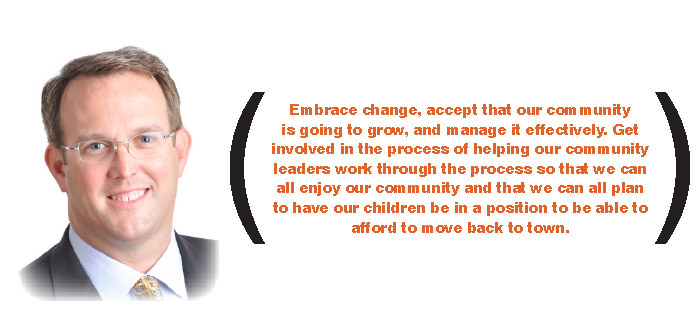It’s easy to speak about the challenges we have in Bend, but most of our problems are due to a community that is growing. OSU Cascades, Mirror Pond, sewer upgrades, Bridge Creek Water Intake, the expansion of our Urban Growth Boundary (UGB), need for new schools, new parks, affordable housing, access to health services, people complaining about traffic and parking. Folks, our town is growing and the question is, do you want our town to continue to grow, or do you want to lock the gate behind you after you moved here?
As a commercial real estate broker who has focused on the development, sale and leasing of commercial properties in Central Oregon since 2004, it’s amazing even for me to see how quickly our community has absorbed existing Industrial, office and retail space. Only a few years ago landlords came to us to lease up their properties for CAMs only (common area maintenance charges) in order to cover just their property taxes and insurance and not apply any cash towards rent.
Now industrial lease rates have risen from a low water mark in Bend in 2012 of $0.25 per square foot per month to more than $0.60 per square foot per month. We have absorbed over 1.6 million square feet of industrial space and as of the date of this analysis, only 28 industrial buildings are for lease in Bend with a total of 290,104 square feet of move in ready suites at an average lease rate of $0.59 per square foot per month. This represents a vacancy rate of 6.4 percent.
High visibility retail and restaurant space is extremely rare while demand is high. High quality office continues to be absorbed by firms that have relocated to Central Oregon from outside the state. Vacancy rates for rental homes and multifamily housing are close to 0 percent and many of our clients have shared their challenge in hiring professionals from outside our area because there is no affordable workforce housing.
So what does all this activity mean for our economy heading into 2015?
We are running out of inventory in all sectors while demand continues to increase. Construction costs have increased and the governmental fees to develop new construction or to redevelop existing structures have increased greatly. We have a lack of commercial zoned development land and prices have gone up adding to the cost of construction.
Many dedicated individuals in the public and private sector are working hard to increase the density for existing lands within the Urban Growth Boundary and they are also working to expand the UGB. Our concern is that no new commercially or residentially zoned land will be brought into the UGB until 2020. And this land will not be entitled nor will it be serviced by utilities, roads and the infrastructure needed to develop the land for several years.
And I am asked almost daily, “Brian, what is the difference between this market and the last bubble back in 2004-07?” My answer is, “This time, the people we work with are not borrowing money; they have cash and a lot of it. And even though Central Oregon has become a more expensive place to live, the people we work with are moving from Portland, Seattle, Palo Alto, Atlanta, Houston, New York, England, Australia and Japan. All of these locations make Bend look extremely affordable.”
So what is the answer? Embrace change, accept that our community is going to grow and manage it effectively. Get involved in the process of helping our community leaders work through the process so that we can all enjoy our community and that we can all plan to have our children be in a position to be able to afford to move back to town.
Brian E. Fratzke, CCIM, principal broker, Fratzke Commercial Real Estate Advisors, Inc., brian@fratcommercial.com, www.fratzkecommercial.com





